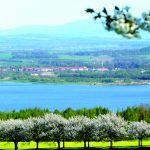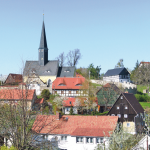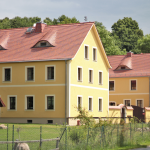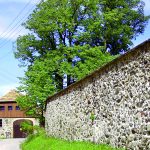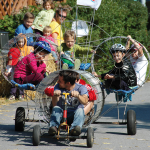Jauernick-Buschbach, Saxony, Germany
Jauernick-Buschbach which has 418 inhabitants is part of the municipality Markersdorf in the Goerlitz catchment area in Germany’s south-east border triangle.
The integration into the municipality Markersdorf in 1994 marked the beginning of a new era for the village. The withdrawal of the lignite extraction which was located in close proximity and the correlated closure of the power plant Hagenwerder was another significant incident in recent years. The sink which was a result from the opencast mining was transformed into a local recreational area during the following 15 years. Under scientific supervision the area was recultivated and finally flooded and turned into a lake.
In order to adjust to the enormous changes that the village had to deal with over the past decades, it was essential to define as well as pull through with clear goals and strategies. In reality, the municipality Markersdorf (still a small community, even after the merger) was still able to man-age many tasks due to an increased civil engagement of the inhabitants and the active involvement of local churches into the community life. Generally speaking, the residents have become very involved as shown by 238 members in six clubs or associations.
The primary objective is that the village remains and is further developed as an attractive place of residence with a high quality of life. During the process Jauernick-Buschbach was able to take advantage of its scenic location, its building-cultural particularities, and traditions. At the same time, a future-oriented basis for sustainable tourism was established.
In addition to the creation of the local recreational area, several other important projects promoted the development process. The expansion of the evangelical meeting place and conference venue Kreuzbergbaude as well as the Catholic meeting place and conference venue Wenzeslaus-Stift are good examples that have created new jobs. Both institutions are available for locals as well as numerous day-trippers and guests who stay overnight.
Forgotten traditions were revitalized by the formation of the Jauernick ascension club which organizes the so-called marriage market. As a result hundreds of young people meet in Jauernick on Ascension Day and get married for at least 24 hours. Several more clubs that were not active during GDR (German Democratic Republic) times, were founded over the last couple of years. Frequent festivities as well as the painting school which is famous far beyond the municipality’s borders illustrate cultural highlights for locals and guests.
Close attention was paid to the renovation of valuable building according to the specifications of monument preservation. New buildings were mainly built in existing gaps which helped to preserve the city center. The infrastructure is developed well enough in order to satisfy the daily needs. Worth mentioning are a mobile village shop, a kindergarten, a medical practice as well as high-speed internet and public transport connections to the nearby cities. Overall, living conditions and the quality of living are high due to numerous initiatives by committed clubs, institutions, and inhabitants. Furthermore, the village’s attractiveness for guests is steadily increasing.
Evaluated: 2014

